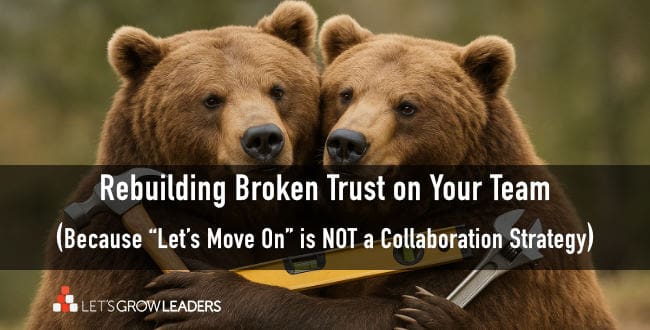Three critical questions will save you time and improve decision making with fewer headaches
In a world with a constantly growing AI presence, where data is cheap, and you can easily outsource routine tasks to large language models, your decision making ability plays a more vital role than ever. Your ability to help your organization and teams make effective decisions is a competitive advantage and rare leadership skill. Three questions will help energize and clarify your decision making process.
When Decision Making Meetings Go Wrong
You’ve been there before. One of those awful meetings that turns into a painful slog through a swamp of half-hearted participation and conversations that go in circles.
Pretty soon someone says, “Sorry, I have to get to another call,” and everyone else looks at them with a mix of jealousy and frustration. The meeting ends with no decision made, an hour or more wasted, and the team’s morale drained from their inability to act.
When decision making meetings go wrong, one or more of these factors is usually in play:
- You don’t have the right people
- You don’t know who owns the decision
- You haven’t defined the success criteria
Invest in Clarity for Energetic Decision Making that Builds Morale
Missing clarity is at the heart of all three decision making morale busters. You can solve them by answering three key questions:
- Who does this decision affect?
- Who owns this decision?
- What would a successful outcome do for each affected party?
Let’s look at each of these questions.
1) Who does this decision affect?
To make the best decision, make sure to include people who the decision affects in the process. You don’t need everyone. What’s the smallest group of people to get the needed input?
2) Who owns this decision?
Before discussion begins, clarify the person or people who will actually make the call. There are only three options:
- A single person decides (maybe you, maybe another subject matter expert)
- A group votes
- A group reaches consensus (where everyone can live with one outcome)
(To learn more about clarifying who attends decision making meetings and who owns the decision check out the Advanced Guide to Lead Meetings That Get Results and People Want to Attend)
3) What would a successful outcome do for you?
This final clarity question is critical to a successful decision, and yet we regularly see leaders skip it or assume that everyone has the same success criteria in mind.
But of course, they don’t, and so people talk past one another and frustration reigns.
You can’t reliably choose effective solutions if you don’t know what success looks like.
Let’s say your team is discussing a marketing opportunity with some newly available funds. If you jump into the discussion before establishing success criteria, how will you choose between different options?
Lela and Vinesh jump in, “Let’s hire actors and do a flash mob of the thriller dance. Then the zombies will transform at the end by shedding their overshirts and revealing our product tee shirt. It will be great for social!”
Mark and Sheila suggest, “We should really do one more booth at the new conference expo they just added at the end of the year. Those leads are usually solid.”
Osa and Vik listen for a moment and then add, “Let’s not limit ourselves here. There’s an opportunity for a partnership with the magic soda corp—they’re looking for someone to package with for a winter campaign.”
The conversation likely turns into a tug of war between two or three different positions who each argue for solutions that make sense to them.
The antidote to this confusion and frustration is to establish clear success criteria. If you’ve already got clear success criteria, don’t keep them a secret. Share them before anyone presents any ideas.
A Powerful Question
But if the criteria aren’t clear or haven’t been established for you, it’s up to you to ensure a shared understanding of what success looks like.
When you first ask key stakeholders what a successful outcome will do for them, you can build a set of success criteria that will both filter the ideas people bring to the table and then give the decision maker(s) a way to evaluate choices.
“What would a successful outcome do for you?” is one of our favorite of the G.O.A.T. (Greatest of All Time) Powerful Phrases for Dealing with Workplace Conflict because it gets underneath what people really need. Instead of arguing for their position (zombies, booth, partnership), you learn what outcomes matter most.
Use Your Criteria to Evaluate Options
Suppose you ask the relevant stakeholders this question and get a resounding answer like, “We need to boost overall sales and leads for next year. A secondary, but important outcome is that need to improve perceived value for our existing channel partners.”
Now you’ve got some general criteria to work with. You might drive for more detail or numeric goals. But even if you get directional criteria like these, you are in a better place to evaluate options. You can ask each group to make their case relative to the success criteria in play.
Team flash mob might take zombies off the table (it would help with perceived partner value, but probably not have much effect on sales or leads.) The expo and partner-packaging folks can make their cases for both outcomes.
Before You Stop with the Options You Have…
You can also ask your team to reframe the opportunity and look for alternative ways to achieve the same or better outcomes.
This can be a fun exercise: “We’ve been talking about increasing our pipeline by 3%. What if we needed to increase it by 10% with the same resources? What might we do?”
Your Turn
It might feel obvious to clarify what success looks before you get into a decision making conversation. But it happens all the time and teams waste too much valuable time and energy talking past one another. Energize your decision making conversations by clarifying who should be there, who owns the decision, and critically, what will a successful outcome achieve.
We’d love to hear from you: how do you ensure decision making criteria are clear before you get into discussions about ideas?








0 Comments